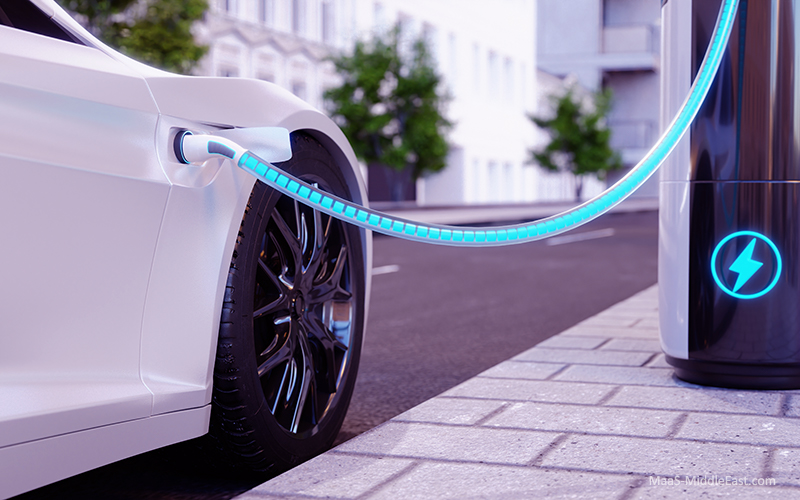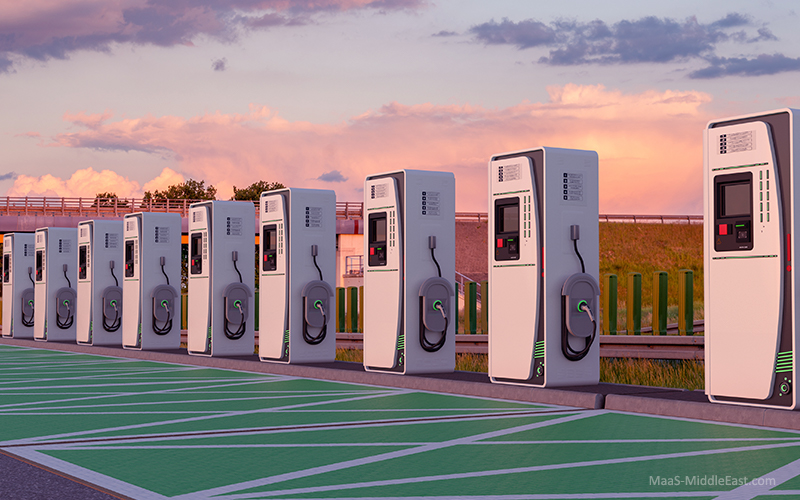The landscape of transportation in the Gulf Cooperation Council (GCC) region is undergoing a transformative shift, driven by the rapid adoption of electric vehicles (EVs). As the world transitions towards cleaner, more sustainable modes of transport, the demand for robust EV charging infrastructure has become paramount. However, building a reliable and efficient charging network presents significant challenges that must be addressed to ensure a smooth transition to electric mobility.
What is the Current Status of EV Charging Infrastructure in the GCC
The GCC region is witnessing a burgeoning electric vehicle (EV) market, and a crucial component of this growth is the development of a robust charging infrastructure.
- United Arab Emirates: As a pioneer in sustainable initiatives, the UAE has made significant strides in expanding its EV charging network. More than 700 EV charging stations are currently operational in Dubai, Abu Dhabi, and across the UAE, catering to the growing demand for EVs. The UAE’s 2030 plan aims to have more than 15% of its vehicles electrified. This ambitious goal necessitates a corresponding expansion of the charging infrastructure to ensure seamless and convenient EV adoption.
- Saudi Arabia: The Kingdom of Saudi Arabia has also embarked on a journey towards electric mobility, with a focus on developing a sustainable transportation sector. The country has seen a rapid increase in the number of EV charging stations in recent years. EVIQ, a leading player in Saudi Arabia’s electric vehicle landscape, is leading the charge towards a greener future. The company’s ambitious plan to establish 5,000 charging points by 2030 will provide drivers with convenient and accessible charging options across the Kingdom. Furthermore, the Saudi Vision 2030 plans to transition 30% of its vehicles to be electric. To support this transition, the government is investing heavily in building a comprehensive charging network.
- Other GCC Countries: While the UAE and Saudi Arabia have taken the lead in EV adoption and infrastructure development, other GCC countries are also making progress in this area.

Challenges in Building a Sustainable EV Charging Network
While the future of EVs in the GCC is promising, there are significant challenges to address. Understanding these challenges is essential for developing effective strategies to overcome them and pave the way for a successful transition to electric vehicles.
A. Unpredictability of EV Usage
One of the significant hurdles in establishing a sustainable EV charging network is the inherent unpredictability of EV usage patterns. Unlike traditional gasoline-powered vehicles, EVs can be charged at home, at work, or at public charging stations. This variability makes it challenging to accurately forecast demand and plan infrastructure accordingly.
The lack of historical data on EV usage patterns further complicates the issue. As the market for EVs is relatively new, there’s limited information to guide decision-making on the optimal location and number of charging stations. This uncertainty can lead to underinvestment or overinvestment in charging infrastructure, both of which have negative consequences.
B. Infrastructure Planning
Building charging stations in new developments presents a different set of challenges than retrofitting existing infrastructure. While new developments offer the opportunity to integrate charging stations seamlessly into the planning process, it requires foresight and coordination with developers and utilities. Ensuring that the charging infrastructure is compatible with future EV models and technologies is also crucial.
Retrofitting existing infrastructure, on the other hand, can be more complex due to limitations in space, power supply, and accessibility. Upgrading existing facilities to accommodate charging stations may involve significant costs and disruptions. Additionally, integrating charging infrastructure into older urban environments can be challenging due to factors such as limited parking spaces and the need to balance the needs of different users.
C. Creating Sustainable Urban Environments
The development of a sustainable EV charging network is closely intertwined with the creation of environmentally friendly cities. Charging infrastructure plays a vital role in supporting the transition to electric vehicles, which offer significant reductions in greenhouse gas emissions compared to traditional vehicles.
To effectively integrate charging infrastructure into urban environments, it is essential to consider factors such as accessibility, convenience, and the overall user experience. Charging stations should be located in strategic locations, such as near residential areas, workplaces, and public transportation hubs. Additionally, the design and operation of charging stations should be user-friendly and support a seamless charging experience.
By addressing these challenges and investing in a robust EV charging network, cities can pave the way for a cleaner, more sustainable future.

Strategies for Building a Robust EV Charging Network
With the discussion of the challenges in building a sustainable EV charging network, we now turn to the strategies necessary to overcome these obstacles. This section will explore the importance of data, grid upgrades, and government initiatives in creating a robust and accessible infrastructure for electric vehicles.
- Data Access and Management: A cornerstone of a successful EV charging network is the availability and effective management of data. Collecting and analyzing data on EV usage patterns, charging station utilization, and grid capacity is crucial for informed decision-making. This data can be used to identify areas with high demand, optimize charging station locations, and assess the need for infrastructure upgrades. Governments, utilities, and charging network operators can leverage data analytics to gain valuable insights into EV adoption trends, charging preferences, and potential bottlenecks. By understanding these factors, they can make data-driven decisions to ensure the efficient and sustainable development of the charging network.
- Grid Capacity and Access: The increasing number of EVs requires a substantial upgrade to the existing electricity grid. The additional load created by charging stations can strain the grid’s capacity, especially during peak usage hours. To accommodate this growing demand, investments in grid infrastructure, including new substations, transmission lines, and distribution networks, are necessary. Moreover, ensuring equitable access to charging infrastructure is essential for widespread EV adoption. This means addressing the needs of both urban and rural areas, as well as considering the specific requirements of different EV models and charging speeds. By investing in grid upgrades and ensuring equitable access, governments can create a charging network that supports the transition to electric vehicles.
- Strategic Planning: Government-led initiatives play a crucial role in driving the development of a robust EV charging network. By setting clear policies, providing incentives, and investing in infrastructure, governments can create a favorable environment for the growth of the EV market. The UAE and Saudi Arabia have demonstrated strong commitment to electric vehicle adoption through various initiatives. These countries have implemented comprehensive strategies that include setting ambitious targets for EV penetration, providing subsidies and incentives for EV purchases, and investing in charging infrastructure. By learning from the experiences of these countries, other regions can develop effective strategies to accelerate the transition to electric vehicles. Collaboration between public and private stakeholders is also essential for building a sustainable EV charging network. Partnerships between governments, utilities, charging network operators, and private businesses can leverage their respective expertise and resources to address the challenges and opportunities associated with EV adoption.
Frequently Asked Questions
There are more than 400 stations currently operational in Dubai.
Currently, there are more than 700 EV charging stations across the UAE, with more than 250 EV charging locations in Abu Dhabi.
Saudi Arabia plans to establish 5,000 EV charging stations by 2030





